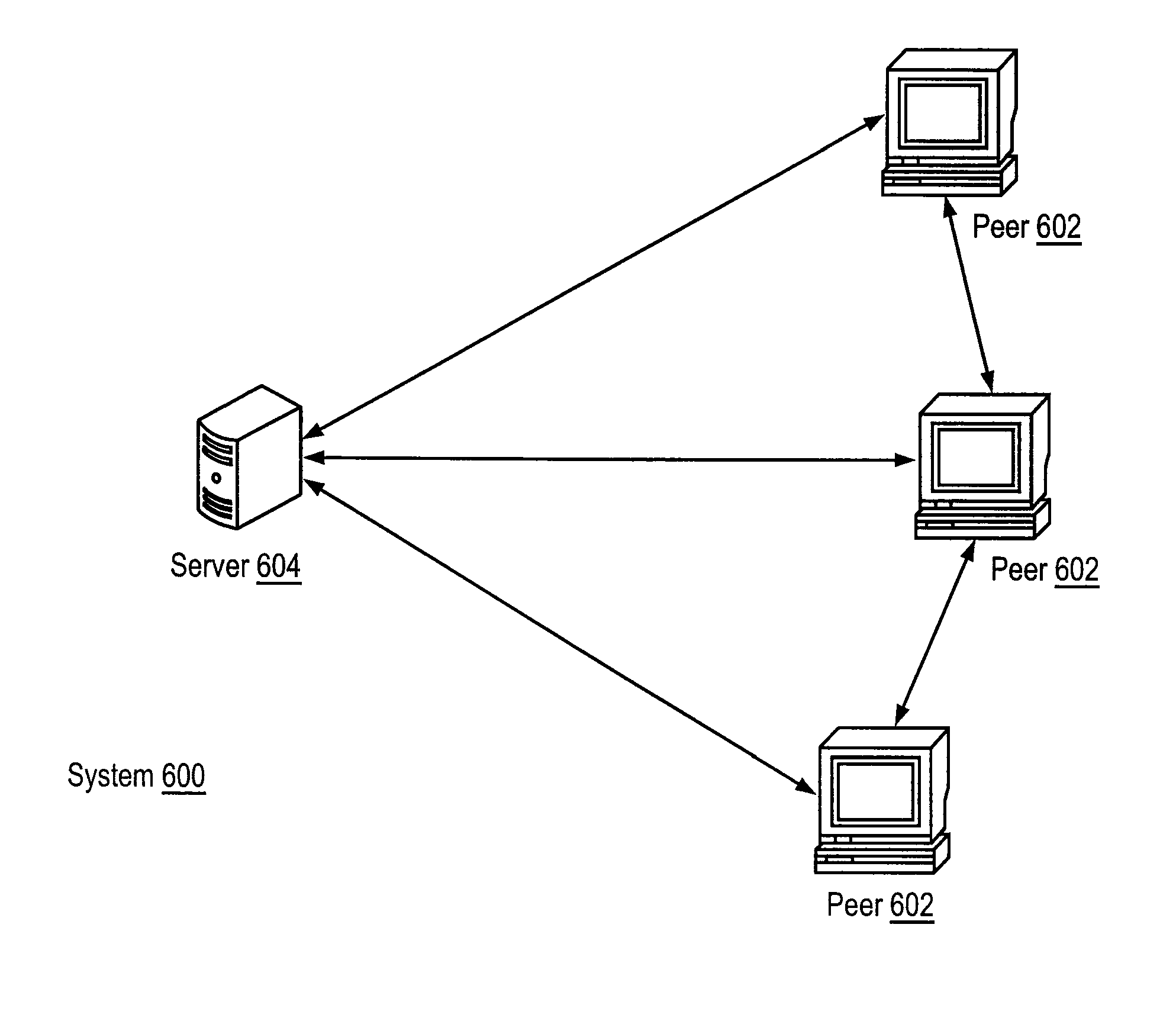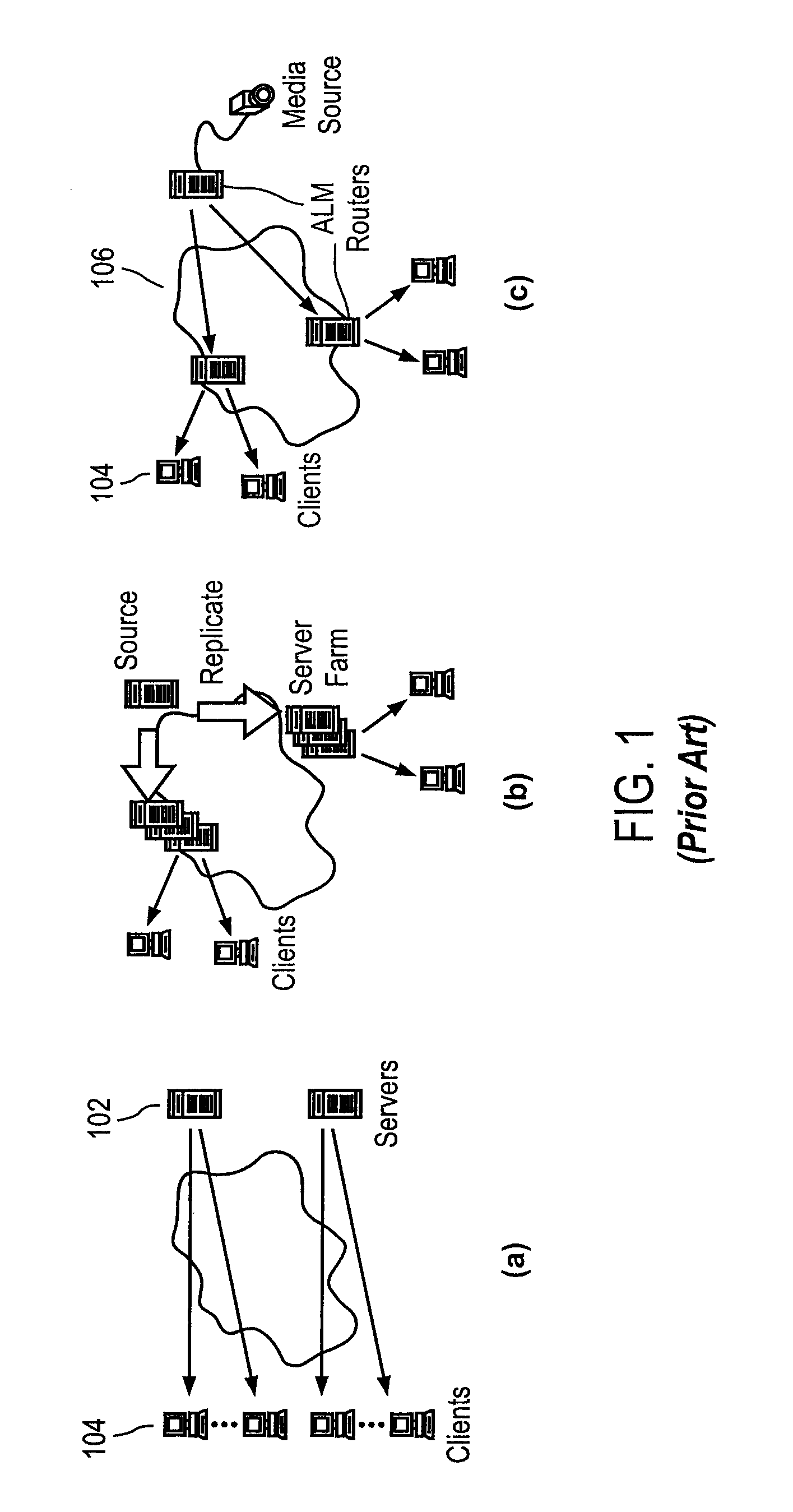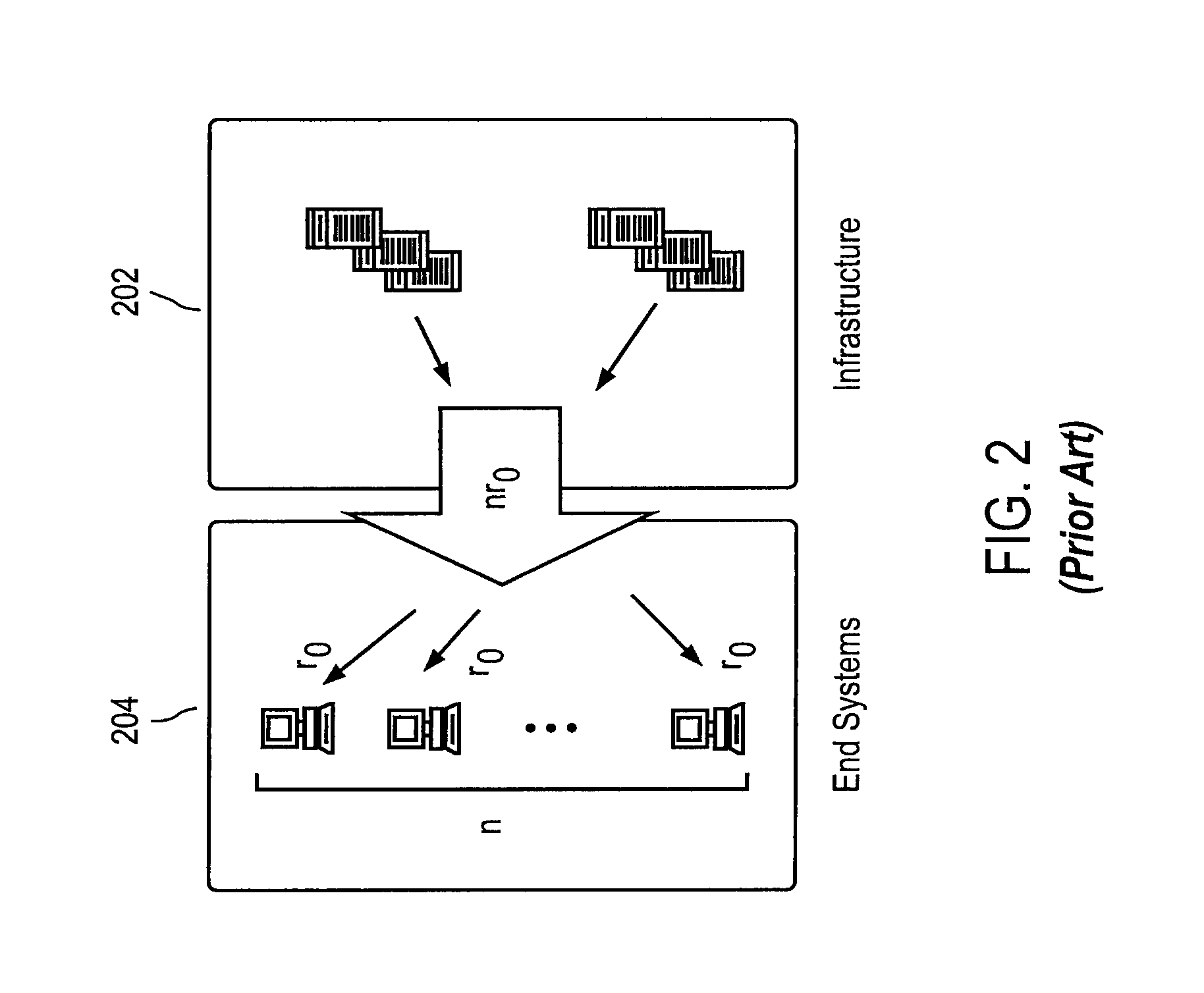Peer-to-peer streaming of non-live content
a peer-to-peer, non-live technology, applied in the field of file transfer in a network, can solve the problems of inability to fully decentralize the incentive mechanism of the proposed end-system multicast scheme, cdns like the traditional server-client model require substantial infrastructure, and achieve the effect of minimal impact on overall performan
- Summary
- Abstract
- Description
- Claims
- Application Information
AI Technical Summary
Benefits of technology
Problems solved by technology
Method used
Image
Examples
case 1
[0104] Unsaturated Downlink
[0105]In this case, we assume that either remote uplinks are saturated and therefore cannot provide additional bit rate to peer P, or peer P's uplink is saturated. If the prior is true, then the rate at which bits arrive from BitTorrent corresponds to a portion of the uplinks of the constant number of peers connected to P and thus RB(t)∝ Cup, where Cup is peer uplink capacity. If the latter is true and the BitTorrent network reciprocates roughly at the same rate as the local peer sends, then RB(t) ≈ C up. Either way, we simplify the problem by setting RB(t) equal to constant r.
[0106]If we let RB(t) denote the rate of bits arriving from BitTorrent and RB(t1, t2) denote the rate bits arrive to interval [t1, t2] then
RB(t)=RB(t,T)=r.
[0107]Let B(t) denote the benefit derived from BitTorrent up to time t, meaning the number of bits provided from BitTorrent that have been played. B(t) is thus given by
B(t)=∫0tRB(τ,t)dτ. (1)
[0108]Because in our analysis the bits ...
case 2
[0118] Saturated Downlink
[0119]A node can determine when it is in a state with a saturated downlink versus a state when the BitTorrent peer-to-peer network is bottlenecked elsewhere with the following procedure:
[0120]
if util > sat_thresh thensaturatedelsenot saturated
[0121]Here sat_thresh is a system parameter in (0, 1) likely close to 0.9. uti1 is measured over an interval and exponentially averaged in the same manner as the util variable maintained by the BASS server.
[0122]If a node is in the case of a saturated downlink then it uses the following analysis as input to its load estimate, which it can use as its bid.
[0123]In the case of a saturated downlink, RB(t) is no longer a constant r, but is rather a function of the available capacity. Because of the auction game, we know that a user will want to maximally utilize BitTorrent to avoid the possibility of being cut off before completing streaming. Thus we can restate the problem as a simple single variable linear optimization:
max...
PUM
 Login to View More
Login to View More Abstract
Description
Claims
Application Information
 Login to View More
Login to View More - R&D
- Intellectual Property
- Life Sciences
- Materials
- Tech Scout
- Unparalleled Data Quality
- Higher Quality Content
- 60% Fewer Hallucinations
Browse by: Latest US Patents, China's latest patents, Technical Efficacy Thesaurus, Application Domain, Technology Topic, Popular Technical Reports.
© 2025 PatSnap. All rights reserved.Legal|Privacy policy|Modern Slavery Act Transparency Statement|Sitemap|About US| Contact US: help@patsnap.com



